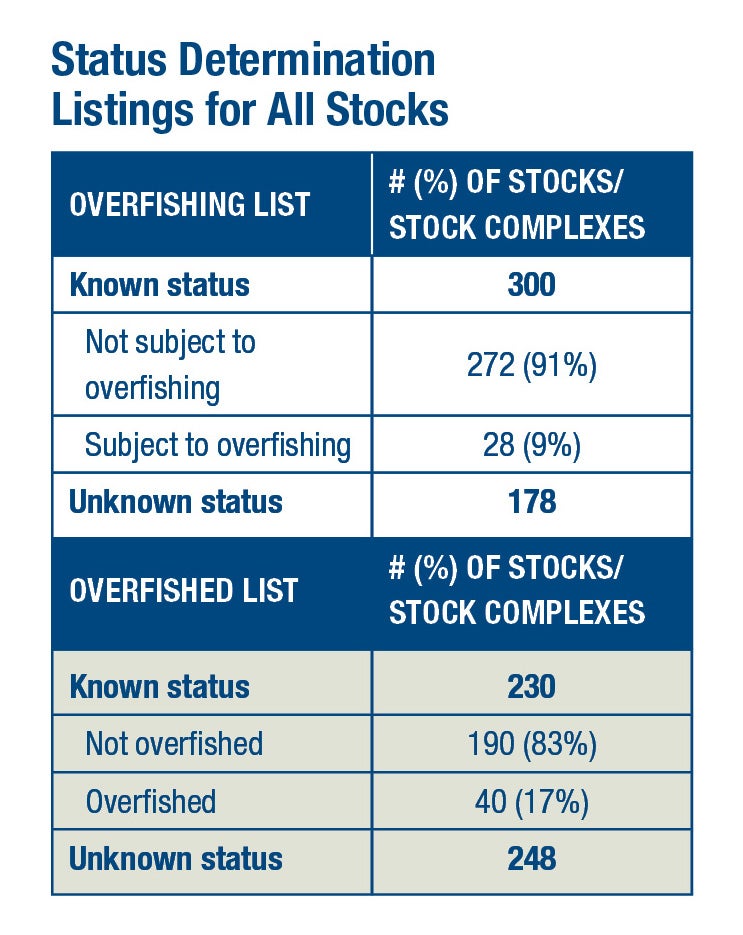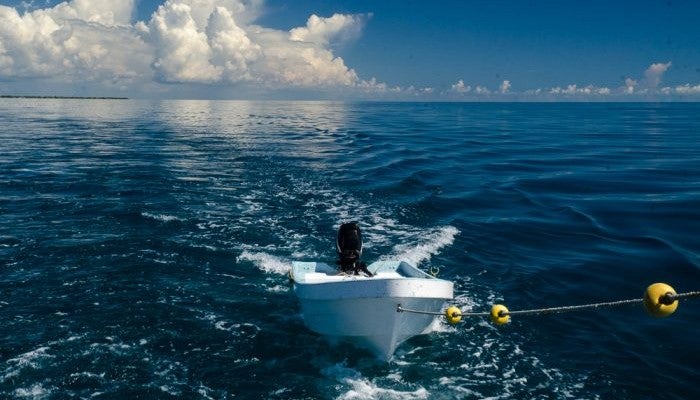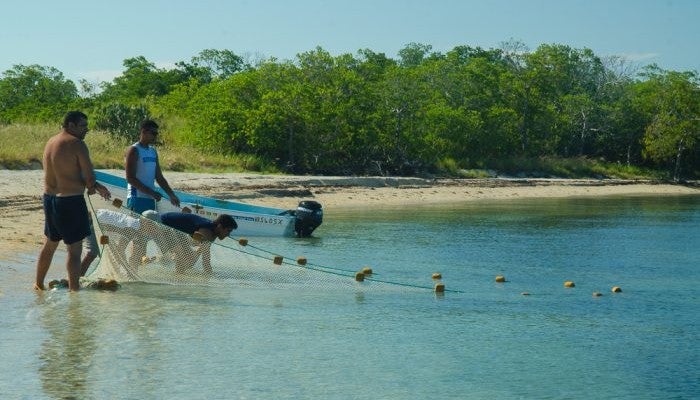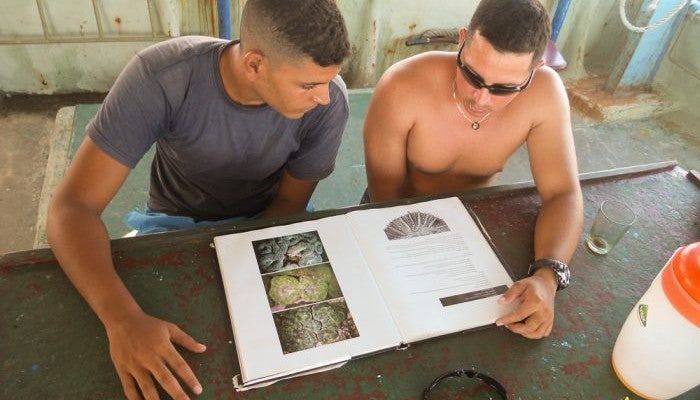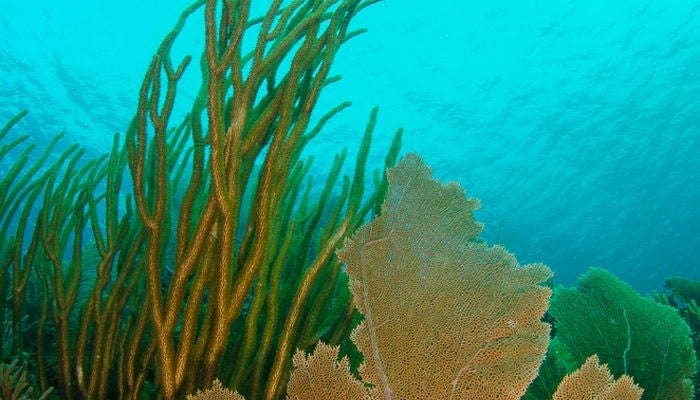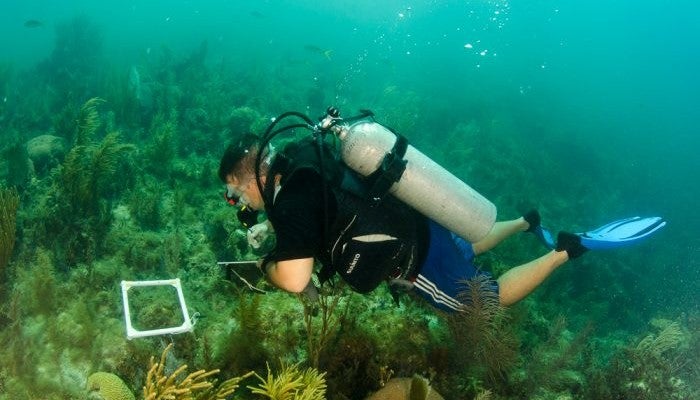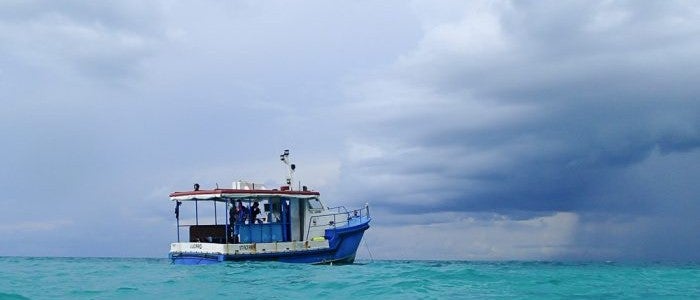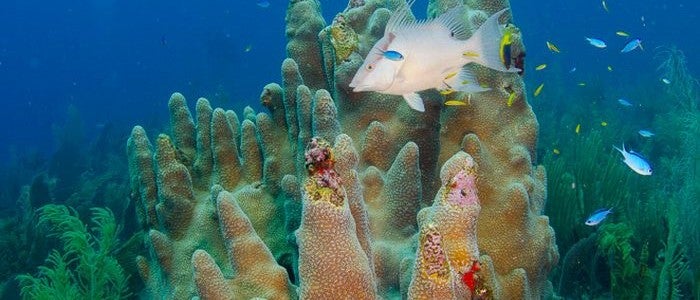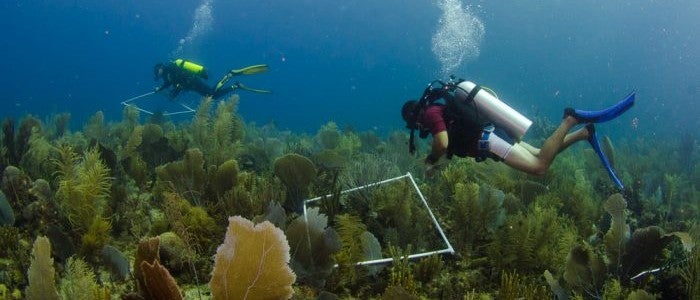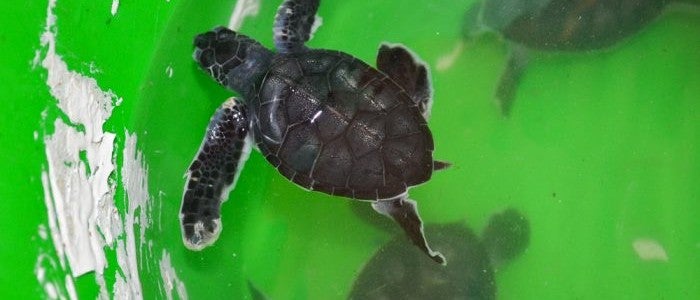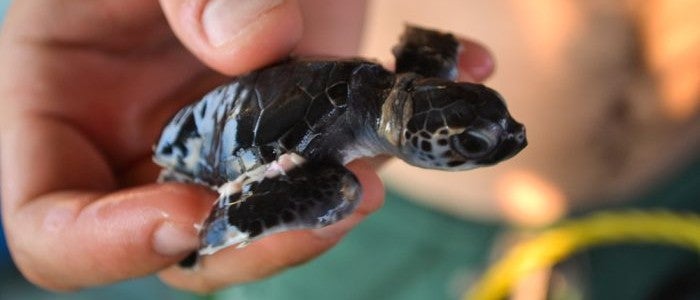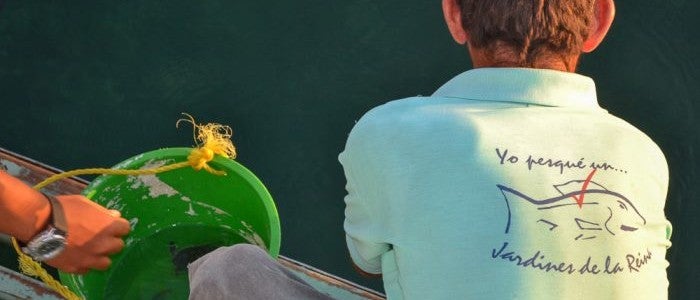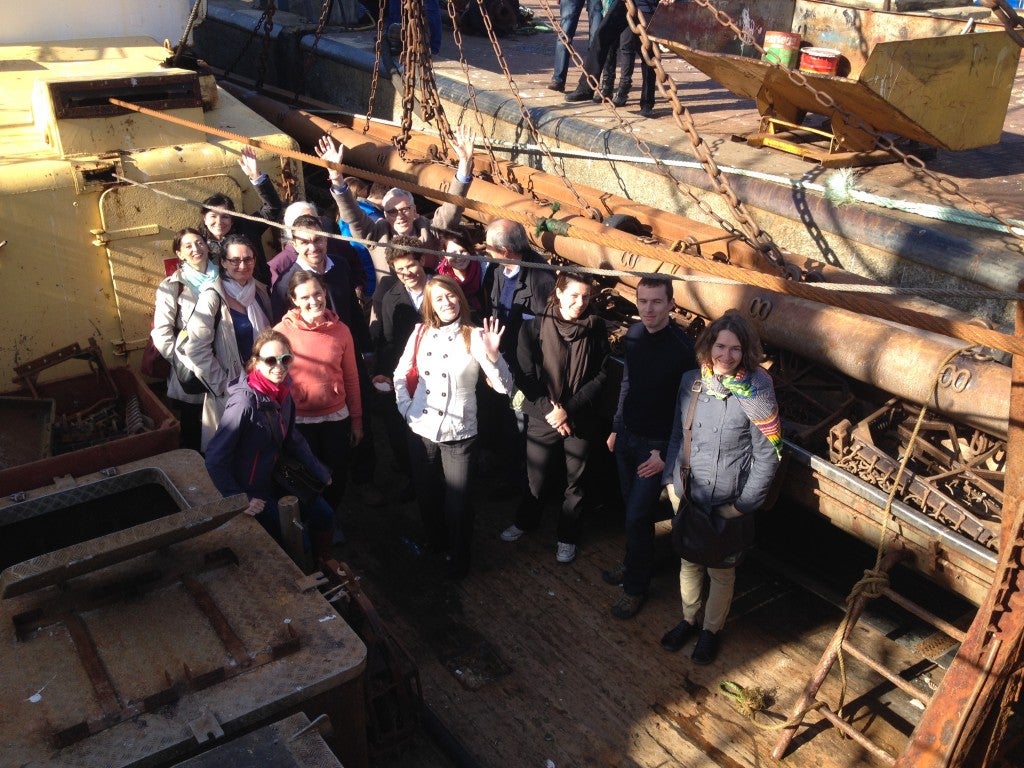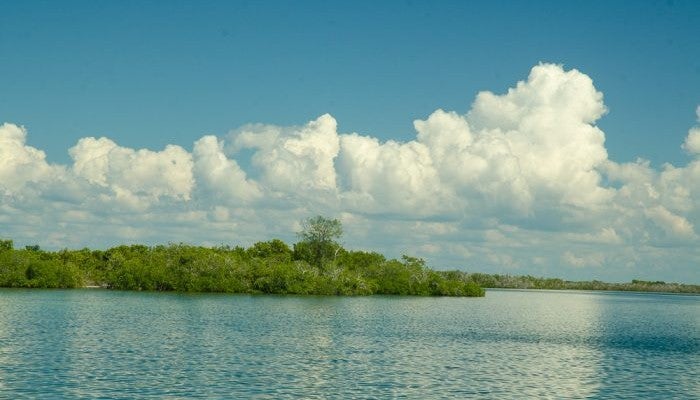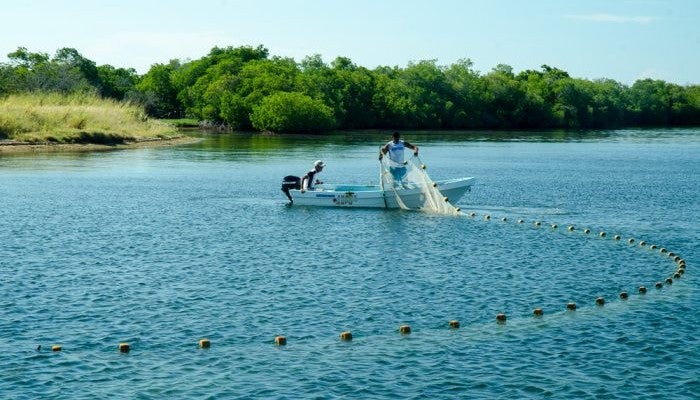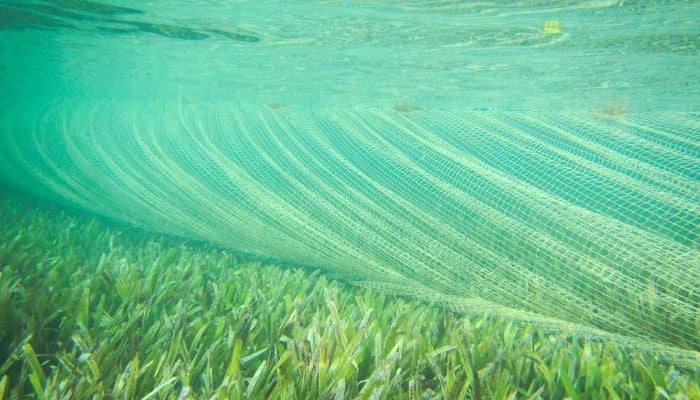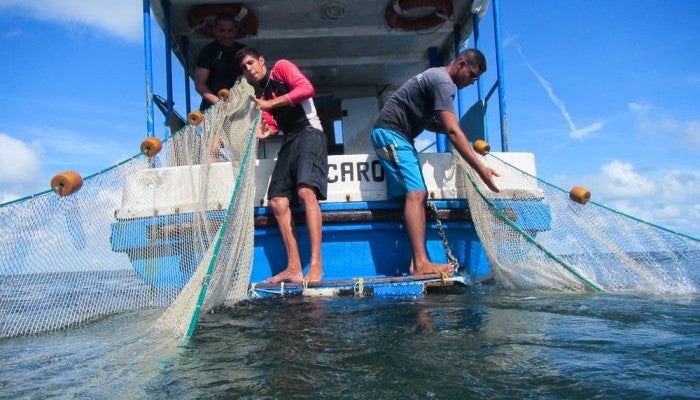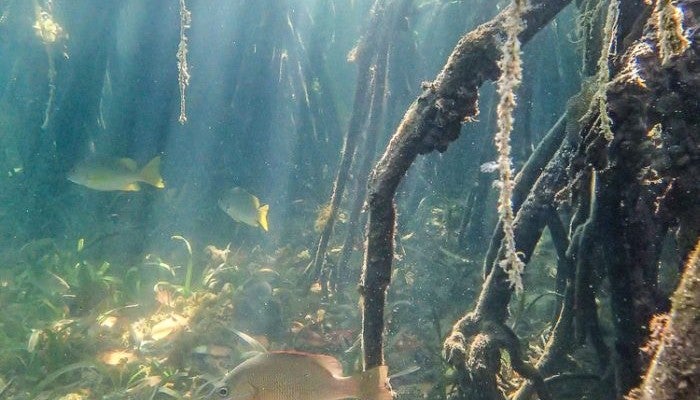By: Kendra Karr & Owen Liu
A team of scientists from Cuba and EDF set sail on an expedition to assess the status and health of marine ecosystems of the Gulf of Ana Maria and the Gardens of the Queen marine reserve in southern Cuba, one of the most pristine and intact coral reef ecosystems in the Caribbean.
Cuba’s Centro de Investigaciones de Ecosistemas Costeras (CIEC) field station in the Gardens of the Queen is a cozy lodge in a quiet inlet tucked away on a mangrove-covered cay. Near the Caballones Strait in the middle of the beautiful Gardens of the Queen, the station is a base for Cuban students and researchers studying Cuba’s unique coastal ecosystems. On our research cruise in October 2013, scientists from EDF, CIEC, and the University of Havana’s Centro de Investigaciones Marinas (CIM) spent a few nights at the station, interspersed along the two week trip. We used the shore time to compile data and organize gear, scramble for a few minutes of (very) limited Internet access to send updates home and simply enjoy a night on dry ground.
Sitting on the dock watching the sun set over the Gardens provided a chance to reflect on the work we were doing, and to ponder about the interconnectivity between the data sets we had collected.
A Diversity of Data:
During the cruise, researchers from CIM, CIEC, and EDF surveyed more than 30 sites across multiple habitat types, both inside and out of the Gardens of the Queen marine reserve. In the future, these sites will offer a baseline measure of connectivity between the offshore environments and nearshore fishing grounds. During the expedition, researchers collected samples from commercially-valuable fish species, corals, sessile and mobile invertebrates and macroalgae.
All of the samples will undergo an independent stable isotope analysis, which allows researchers to quantify the relative contributions of individuals from each region/site to the fishing grounds and identify migration corridors among important habitats. In short, it will help determine where an individual fish, coral colony, etc. originated from. Combined with oceanographic and abiotic data collected during the expedition (for example, nutrients and sediments in seawater; tides, currents and waves), this information will reveal a more complete picture of interconnectivity between the various marine habitats in this unique region of the Caribbean.
We used a variety of methods to gather data. To assess coral health, researchers used SCUBA to get close enough to the reef to document the diversity of species at each site and look for signs of degradation or disease. To study which fish used shallow seagrass – mangrove habitats as either nursery grounds or as adult habitats, we used a beach seine net from the shoreline to corral, count, and measure individual fish. By seeing which species of fish utilized the nearshore mangrove and seagrass beds, and then counting the fish on the nearby coral reefs with a visual transect method, we could begin to see, literally, the biological connections between these distinct habitats. As some researchers were in the water, counting fish or documenting coral health, others collected water samples for chemical analysis or hauling in a sampling net. Read More »










